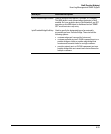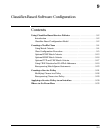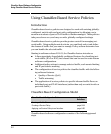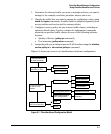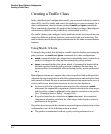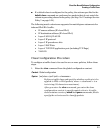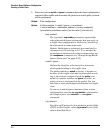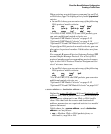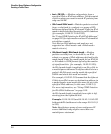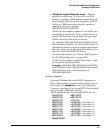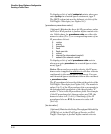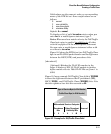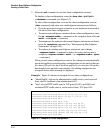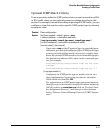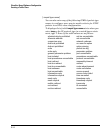
Classifier-Based Software Configuration
Creating a Traffic Class
When entering a match/ignore command in an IPv4
or IPv6 class, type ? to display a list of valid ip-protocol
entries.
• In an IPv4 class, you can enter any of the following
IPv4 protocol match criteria:
ah esp gre icmp* igmp*
ip ip-in-ip ipv6-in-ip ospf pim
sctp snmp tcp* udp* vrrp
* For IPv4 ICMP, IGMP, TCP, and UDP packets, you
can enter additional match criteria; see:
“Optional ICMP Match Criteria” on page 9-13
“Optional IGMP Match Criteria” on page 9-16
“Optional TCP and UDP Match Criteria” on page 9-17
To specify an IPv4 protocol as match criteria, you can
also enter its protocol number. Valid values are from
0 to 255.
For example, 8 means Exterior Gateway Protocol; 121
means Simple Message Protocol. For a list of IPv4
protocol numbers and corresponding protocol names,
refer to the IANA “Protocol Number Assignment Ser-
vices” at www.iana.com.
• In an IPv6 class, you can enter any of the following
IPv6 protocol match criteria:
ah esp icmp* ipv6
sctp tcp* udp*
* For IPv6 ICMP, TCP, and UDP packets, you can enter
additional match criteria; see:
“Optional ICMP Match Criteria” on page 9-13
“Optional TCP and UDP Match Criteria” on page 9-17
< source-address > < destination-address >
Define the source IP address
(SA) and destination IP
address (DA) that a packet must contain to match a
match/ignore statement in an IPv4 or IPv6 traffic
class. Note that both the source and destination
address parameters are required entries in a match/
ignore statement.
Valid values for
< source-address > and < destination-
address
> are as follows:
• any
— Matches IPv4 or IPv6 packets from, or
destined to, any SA or DA.
9-7



